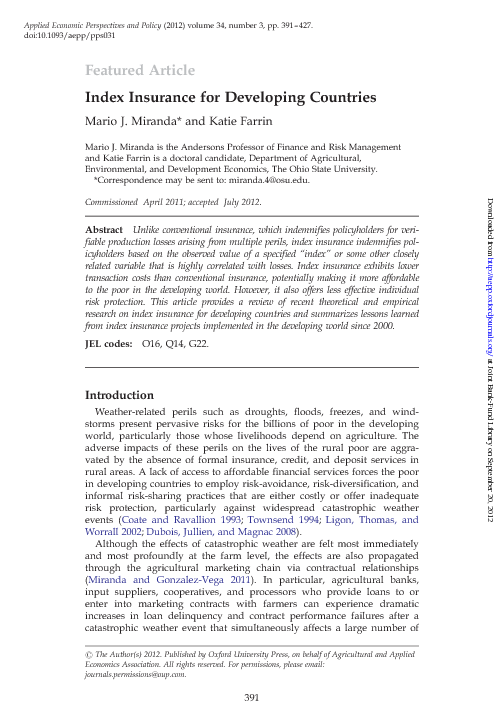Index Insurance for Developing Countries

Unlike conventional insurance, which indemnifies policyholders for verifiable production losses arising from multiple perils, index insurance indemnifies policyholders based on the observed value of a specified “index” or some other closely related variable that is highly correlated with losses. Index insurance exhibits lower transaction costs than conventional insurance, potentially making it more affordable to the poor in the developing world. However, it also offers less effective individual risk protection. This article provides a review of recent theoretical and empirical research on index insurance for developing countries and summarizes lessons learned from index insurance projects implemented in the developing world since 2000.
